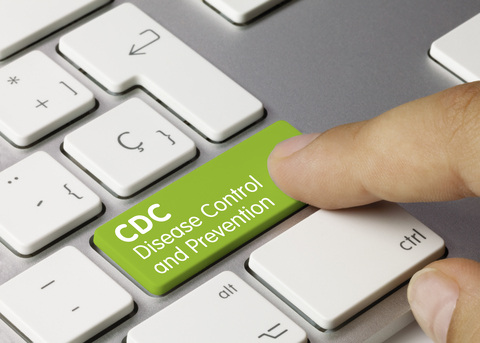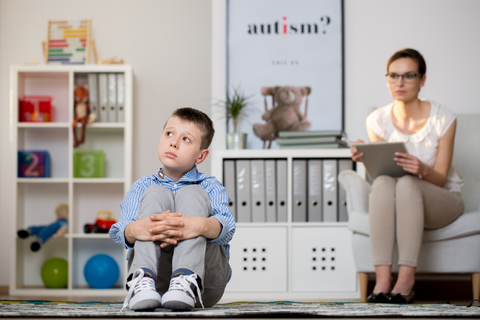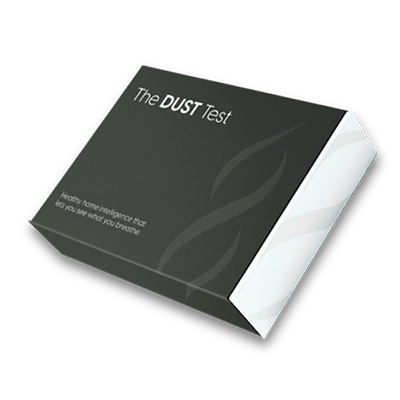If you’ve landed on this page, there’s a good chance you’re feeling overwhelmed. Maybe you’ve been up late researching, trying to connect dots that doctors haven’t. Or perhaps your gut is telling you something in your home environment isn’t right—and it might be affecting your child. When the word “autism” comes into the picture, the need for answers becomes even more urgent. And when the words “mold and autism” get brought into the equation? It can be anxiety-inducing.
I know how hard it is to ask the hard questions: Could mold be playing a role? Could something in our air be affecting my child’s development—or even mine during pregnancy?
You’re not alone. And this isn’t about blame—it’s about knowledge. More and more families are discovering the role that environmental factors like mold and poor indoor air quality can play in health, especially when it comes to developing brains and immune systems. And while this realization can be daunting, it also opens the door to clarity, action, and healing.
Understanding the relationship between mold and autism is the first step towards creating real and lasting change and protecting future generations.
What is Autism?
Autism Spectrum Disorder (ASD) is a developmental disability characterized by differences in the brain that affect social communication, behavior, and learning. Individuals with ASD often experience challenges in social interaction, display restricted or repetitive behaviors, and may have unique ways of learning, moving, or paying attention.
Prevalence of Autism

The prevalence of autism has been on the rise over the past two decades. According to the Centers for Disease Control and Prevention (CDC), approximately 1 in 31 children aged 8 years were identified with ASD in 2022. This marks a significant increase from earlier estimates, such as 1 in 150 in 2000.
Several factors contribute to this increase, including:
Improved Awareness and Screening: Enhanced public awareness and better screening tools have led to more children being evaluated and diagnosed.
Expanded Diagnostic Criteria: The definition of ASD has broadened over time, encompassing a wider range of symptoms and severities.
Increased Access to Services: More families now have access to diagnostic and support services, facilitating earlier and more frequent diagnoses.
Keep in mind that while these factors explain much of the rise in diagnoses, ongoing research continues to explore other potential contributors, including environmental influences and whether there is a relationship between mold and autism.
What Causes Autism?
Right now, there’s no single answer to what causes autism. Instead, researchers believe it’s a mix of genetics and environmental factors working together.
The Role of Genetics
Some kids may be more likely to develop autism because of certain genes they inherit—or even new genetic changes that happen early in development. For example:
If one child in a family has autism, their siblings are more likely to be diagnosed, too.
Some gene differences have been linked to autism, especially in rare cases involving conditions like Fragile X or Rett syndrome.
But having these genes doesn’t mean a child will develop autism—it just means the risk might be higher.
Environmental Factors
This is where things get even more interesting. Scientists are looking closely at what happens around a baby during pregnancy and early childhood. Things like:
The age of the parents at conception
Complications during pregnancy or birth
Exposure to certain chemicals or infections before birth
These kinds of environmental factors might interact with a child’s genetics, influencing how their brain develops.
And that’s where a growing number of experts are starting to ask: Could mold and autism play a role in that risk?
Exploring the Potential Link Between Mold and Autism

The relationship between environmental factors and autism has been a subject of growing interest. Among these factors, exposure to mold and its toxic byproducts, known as mycotoxins, has garnered attention for its possible impact on neurological development.
How Mold Exposure Influences Neurological Health
Mold releases mycotoxins—chemical substances that are harmful when inhaled or ingested. These toxins have been shown to affect the nervous system in several ways:
- Neuroinflammation: Exposure to certain mold spores can trigger an immune response in the brain, leading to inflammation. This neuroinflammatory response has been associated with cognitive and behavioral changes.
- Immune System Dysregulation: Mycotoxins may disrupt the normal functioning of the immune system, exacerbating conditions in individuals with pre-existing immune vulnerabilities.
- Oxidative Stress: Some studies found that mycotoxins can induce oxidative stress, a condition where harmful free radicals damage cells, including those in the brain .
What the Research Says About Mold and Autism
While the exact mechanisms remain under investigation, several studies have explored the potential association between mold exposure and autism:
- A systematic review highlighted that mycotoxin exposure might influence neurological and inflammatory pathways in individuals with ASD, suggesting a need for further research into this connection.
- Another study discussed how mold inhalation could lead to immune activation and neural dysfunction, which are areas of concern in neurodevelopmental disorders.
- Studies suggest that pregnant women exposed to mold have a higher likelihood of giving birth to children with autism, indicating a potential link between prenatal mold exposure and increased ASD risk.
However, it's important to note that these studies indicate correlations rather than causations. The evidence is still emerging, and more comprehensive research is necessary on exactly how mold and autism are intertwined. Unfortunately, this is a common issue with understanding how mold impacts the body– with awareness just now starting to increase, research is just now beginning to ramp up regarding the subject.
Proceeding with Caution
What we do know is this: mold exposure doesn’t just affect one part of the body—it can cause a systemic response, impacting the immune system, brain, lungs, and beyond.
Broader research into air quality and health has already shown how breathing in polluted air—whether from outdoor smog or indoor contaminants—can increase the risk of everything from asthma and allergies to cognitive decline and developmental delays. Since mold actively degrades indoor air quality, it makes sense to ask: Could this invisible exposure be influencing developmental conditions like autism, too?
While science hasn’t given us all the answers yet, the signals are strong enough to raise serious concern. As researchers continue to investigate, it’s essential to take proactive steps now—limiting exposure, improving air quality, and promoting overall wellness.
Why Are We Just Talking About Mold and Autism Now?

It’s a fair question: If mold has been around forever, why are we only now connecting it to serious health concerns like autism or chronic illness?
The truth is, our indoor environments have changed—a lot. And rather quickly.
Homes Are Built Tighter Than Ever
Modern homes are designed to be energy-efficient, which sounds like a good thing (and in many ways, it is). But there’s a catch: these homes are sealed up tightly with very little natural ventilation. That means when something like mold starts growing inside, the particles it releases—spores, fragments, and mycotoxins—get trapped indoors, and the people living there continue to breathe them in.
Older homes used to “breathe” more. Fresh air would find its way in through cracks and gaps, diluting pollutants. Now? Not so much.
Indoor Pollution Has Skyrocketed
At the same time, we’ve filled our homes with man-made chemicals that didn’t exist a few decades ago:
- Volatile Organic Compounds (VOCs) from paint, flooring, and furniture
- Pesticide residues tracked in from outside or sprayed inside
- Flame retardants, plasticizers, and synthetic fragrances
These chemicals don’t mix well with biological contaminants like mold. In fact, together, they may create a more toxic environment than either could on their own.
Water Damage Is on the Rise
More frequent extreme weather events, aging infrastructure, and poor construction practices have all led to an increase in water-damaged buildings. Mold thrives in damp conditions, and many water issues go unnoticed or unresolved long enough for mold to take hold and spread.
So, when you combine:
- Poor ventilation
- Rising indoor pollution
- Persistent dampness or leaks
- Sensitive individuals, like kids with developing immune and neurological systems
You start to understand why this moment in time matters.
It’s not that mold suddenly became more dangerous. It’s that the modern indoor environment has created the perfect storm for it to affect us more deeply—and in ways we’re only beginning to understand.
Drawing Causal Relationships Between Mold and Autism

Scientists are still in the early stages of understanding how environmental factors like mold might contribute to conditions like autism. But studies are starting to connect the dots. Here’s what we know so far—and why it matters.
Neurological Symptoms of Mold Exposure
Let’s start with the brain.
A 2018 review in Toxicology Reports highlighted a growing body of evidence linking mold exposure to neurological symptoms like memory loss, difficulty concentrating, tremors, headaches, and mood swings. The study found that mycotoxins can cross the blood-brain barrier, potentially leading to inflammation and changes in brain function.
In simpler terms? Mold doesn’t just make you sneeze—it can impact how you think, feel, and function.
And when we consider that autism spectrum disorder (ASD) is a neurodevelopmental condition, any substance that can interfere with healthy brain development or function becomes a red flag worth paying attention to.
Can Mold Cause Behavior Problems?
This question has been gaining traction—and the science is pointing toward yes.
According to a 2019 study in NeuroToxicology, exposure to mold and water-damaged buildings was linked to behavioral and emotional disturbances in children, including aggression, anxiety, and attention issues. These aren’t just random symptoms—they mirror some of the challenges many children with autism already face.
While this doesn’t outright prove mold and autism have a cause-and-effect relationship, it does suggest that exposure could amplify symptoms or make life more difficult for children already managing a neurodevelopmental condition.
How Does Mold Impact Developing Immune Systems?
Autism isn’t just about the brain. More and more research is looking at the immune system’s role in autism development—and that’s where mold becomes especially concerning.
Several studies, including one published in Environmental Health Perspectives, have shown that mold exposure during critical developmental windows can disrupt immune regulation in infants and young children. These disruptions may lead to chronic inflammation, autoimmunity, or overactive immune responses—all of which have been linked to autism in other research.
Another study notes that children exposed to damp environments early in life often develop altered immune responses, making them more vulnerable to allergies, asthma, and potentially more systemic issues.
When you consider that some children with autism already show signs of immune dysfunction—this overlap starts to look a lot less like coincidence.
Why This Matters
We’re not saying mold definitively causes autism. But the research is painting a picture of mold as a potential contributing factor, especially when combined with genetic predispositions and other environmental stressors.
And the more we learn about how mold interacts with both the nervous and immune systems, the clearer it becomes: this isn’t something we can afford to ignore.
What to Do If You Suspect Mold and Autism May Be at Play

If you’re worried that mold could be contributing to neurological symptoms or behavioral changes related to autism in your child, it’s important to take proactive steps to identify any environmental factors that could be at play. Whether you’re trying to protect your child during pregnancy or you’re looking for answers about your child’s exposure, addressing mold is a critical piece of the puzzle.
Here's a guide to help you navigate the process if you're concerned about mold and autism:
1. Check for Signs of Mold Growth
Mold growth can happen anywhere, in any home—new or old. In fact, newly constructed homes may have hidden mold issues even before anyone moves in, often due to moisture problems during the building process. Older homes can also develop mold if there are leaks or water damage that isn’t addressed quickly.
So, how can you tell if mold is a concern? Start by checking for these common signs:
- Visible Growth: Mold can appear in many forms, from fuzzy or slimy to powdery, and in colors such as green, black, pink, or brown. With over 100,000 species of mold, each may look a bit different, but they all pose similar risks.
- Odor: Mold often emits a musty, earthy smell due to the release of microbial volatile organic compounds (MVOCs). If your home has that damp, cigar-like scent, it’s a strong indication that mold is present.
- Water Damage: Any water damage—whether from leaks, flooding, or condensation—creates the ideal environment for mold growth. Even if the water damage isn’t immediately visible, it’s still something to look out for.
2. Test Your Body and Consult a Knowledgeable Doctor
If you suspect that mold exposure is affecting your child’s health, the next step is to consult with a medical professional who understands mold-related illnesses. While there isn’t a single test for mold exposure, a doctor who specializes in environmental health can help identify whether mold is part of the problem.
Look for a healthcare provider who:
- Has experience treating environmental exposures like mold.
- Uses a personalized approach to care and doesn’t offer one-size-fits-all solutions.
- Is willing to listen to your concerns and adjust the treatment plan based on your child’s specific needs.
Remember, not all doctors are familiar with how mold affects the body, so finding the right one is key to understanding and treating your child's symptoms effectively.
3. Start with the Dust Test
One of the best first steps in identifying mold in your home—whether you’re concerned about autism, neurological symptoms, or simply ensuring a healthy environment—is to conduct a dust test. Dust collects everywhere in your home, and it's often where microscopic contaminants like mold spores settle. Testing the dust with The Dust Test can give you valuable insights into the level of contamination and whether mold is affecting your air quality.
Why is this such a useful test?
- It’s a great starting point: Even if you don’t have visible signs of mold or water damage, dust testing can uncover hidden problems. High levels of mold spores or mycotoxins in the dust point to an underlying issue that may require professional inspection.
- Correlates with medical results: If you or your child are undergoing medical tests for mold exposure, the dust test can help connect the dots. It allows you to correlate your medical findings with potential sources in your environment, giving you a clearer picture of where exposure is coming from.
- Healthy homes start with this test: Even if you’re not dealing with mold and autism concerns, regular dust testing is a good practice for maintaining a healthy home. It can be a helpful tool to ensure your home remains safe, free of contaminant sources, and conducive to well-being.
4. Test Your Home for Mold
If The Dust Test reveals elevated levels of contaminants, it’s time to bring in a professional mold inspector. A qualified inspector will use specialized tools to identify the types of mold in your home, spend hours combing through the space, assess contamination levels, and determine the cause of the growth.
Here’s what to expect from a mold inspection:
- Species of mold present in the home
- Quantities of each species
- Spore presence in the HVAC system
- Mycotoxins levels
With this data, the inspector can develop a tailored remediation plan to address the mold problem and ensure the home is safe for your family.
5. Choose a Qualified Remediation Company
If mold is confirmed in your home, it’s essential to work with a qualified mold remediation company. Not all remediation teams are created equal, so it’s important to choose one that understands the health implications of mold and prioritizes safety in their process.
A comprehensive remediation protocol should include:
- Remediate the sources properly.
- Identify and address the problems that led to those sources in the first place.
- Eradicate all contamination created by those sources, including toxins and bacteria.
When remediation is done properly, you can rest assured that your home is safe from mold and other contaminants, which is crucial for the health of your child—especially if autism or neurological symptoms are a concern.
By taking these steps, you’re ensuring that you’re addressing potential mold exposure in a thorough and systematic way. Whether you're pregnant, trying to protect a child, or concerned about possible health impacts from mold, these actions can help you better understand what's going on in your home and take the right steps toward improving indoor air quality and health.
Creating a Safe Home Environment for Lifelong Wellness
Whether you're navigating mold and autism concerns or simply want to give your child the best start possible, prioritizing indoor air quality is one of the most impactful steps you can take. Clean air isn’t just a “nice to have”—it’s essential for both immediate and long-term health.
The air we breathe indoors plays a major role in overall wellness, especially since we spend around 90% of our time inside. For children, this matters even more. Their bodies are still developing, and studies consistently show that they are more susceptible to environmental pollutants than adults.
Creating a healthier space doesn’t just help avoid mold—it fosters better wellness for everyone in the household.
Simple Steps to Make Your Home Healthier:
- Keep humidity between 35–50% to prevent mold growth and support respiratory health.
- Ventilate properly, especially in bathrooms, kitchens, and laundry areas.
- Use air purifiers or a whole home air purifier to reduce airborne toxins and allergens.
- Fix leaks immediately and check routinely for signs of water damage.
- Choose low-VOC or VOC-free cleaning products, paints, and furniture.
- Regularly replace HVAC filters and schedule cleanings to prevent the buildup of dust and mold spores.
- Clean and dust frequently—contaminants often settle in house dust.
- Declutter and simplify your space, reducing surfaces for dust and spores to collect.
- Install mold-resistant materials in bathrooms, kitchens, and basements.
The goal isn’t just to “baby-proof” sharp corners—it’s to baby-proof the air your child breathes, day in and day out.
For new parents looking to create the healthiest possible environment, we’ve created a free resource: Download our Clean Air, Happy Baby Guide to learn how to optimize your home’s air quality during pregnancy and beyond.
You Have the Power to Change the Story

If there’s one thing we want you to walk away with, it’s this: You are not powerless.
Yes, our modern world is filled with hidden hazards. But with the right information, support, and action, you can protect your family—and even begin to reverse the course of chronic symptoms or developmental concerns caused by environmental triggers like mold.
You don’t need to have all the answers today. What matters is that you’re asking the right questions and taking one step at a time. Because every step you take—whether it’s running The Dust Test, purifying your air, or speaking up for your child to a medical professional—moves you closer to a safer, healthier home.
Awareness is the first step toward empowerment. And in that space of awareness, you hold the power to rewrite your family’s story.
Additional Citations:
https://www.sciencedirect.com/science/article/pii/S0360132323005723
https://hsph.harvard.edu/news/air-pollution-linked-with-increased-risk-of-autism-in-children/


